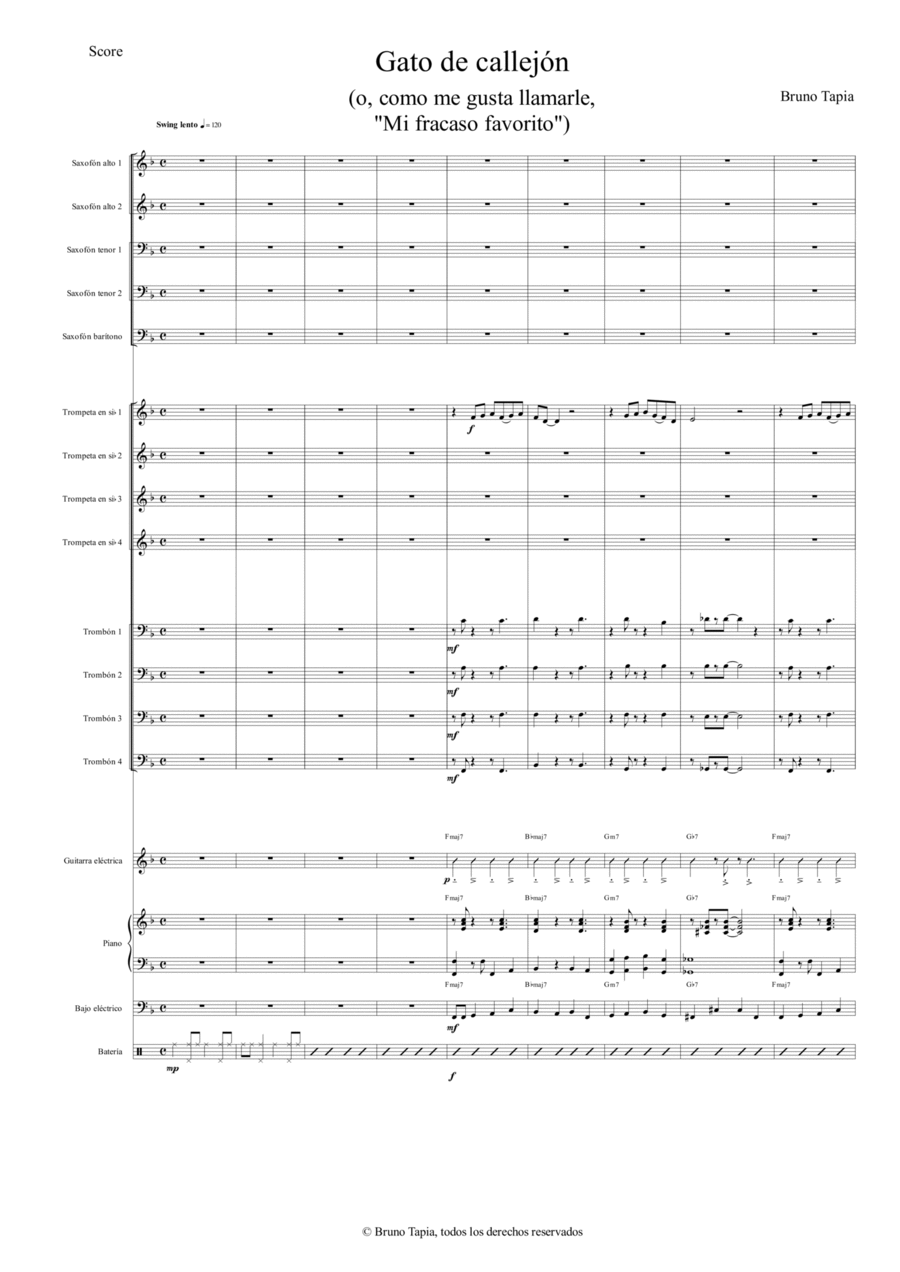Concert Band - Level 4 - Digital Download SKU: A0.1164054 Composed by Bruno Tapia. Jazz. Score and parts. 58 pages. Bruno Tapia #764395. Published by Bruno Tapia (A0.1164054). Gato de callej√≥n es mi primera pieza para big band. Fue presentada al primer concurso de composici√≥n para bandas estudiantiles CORFOBAE durante el 2022, resultando en un cuarto lugar.Esta obra tiene por referencia las sonoridades de swing usadas en varias bandas sonoras de series cl√°sicas (como lo es Don Gato y su pandilla), y por lo tanto, ampliamente extendido en el inconsciente colectivo. El crear una obra en este estilo responde a la necesidad de formentar la creaci√≥n en este tipo de lenguajes, y en particular, en big band.¬†Fue la primera vez que us√© voicings cerrados en toda regla. Se usan arm√≥nicamente un par de vueltas relativamente sencillas. En este caso, me exced√≠ con los grados de dificultad para el concurso (3-4), y me qued√≥ una obra que est√° m√°s cerca del grado 5 en la escala de m√ļsica instrumental de Hal Leonard.¬†Gato de Callej√≥n is my first big band piece. It was presented to the first CORFO BAE composition contest for student bands during 2022, resulting on a 4th place.This piece has as reference the swing sonorities used on several OST's of classical series (as Top Cat), and because of that, widely extended on the colective inconscient. Creating a work on this style responds to the necessity of fomenting the musical creation on this kind of languages, and in particular, on big band.¬†This was my first time using closed voicings on rule. There's harmonicly a pair of relatively simple turnarounds.In this case, I exceeded the difficulty grades of the contest (3-4), and I had a work mostly near to the grade 5 on Hal Leonard's Instrumental Music Scale.
